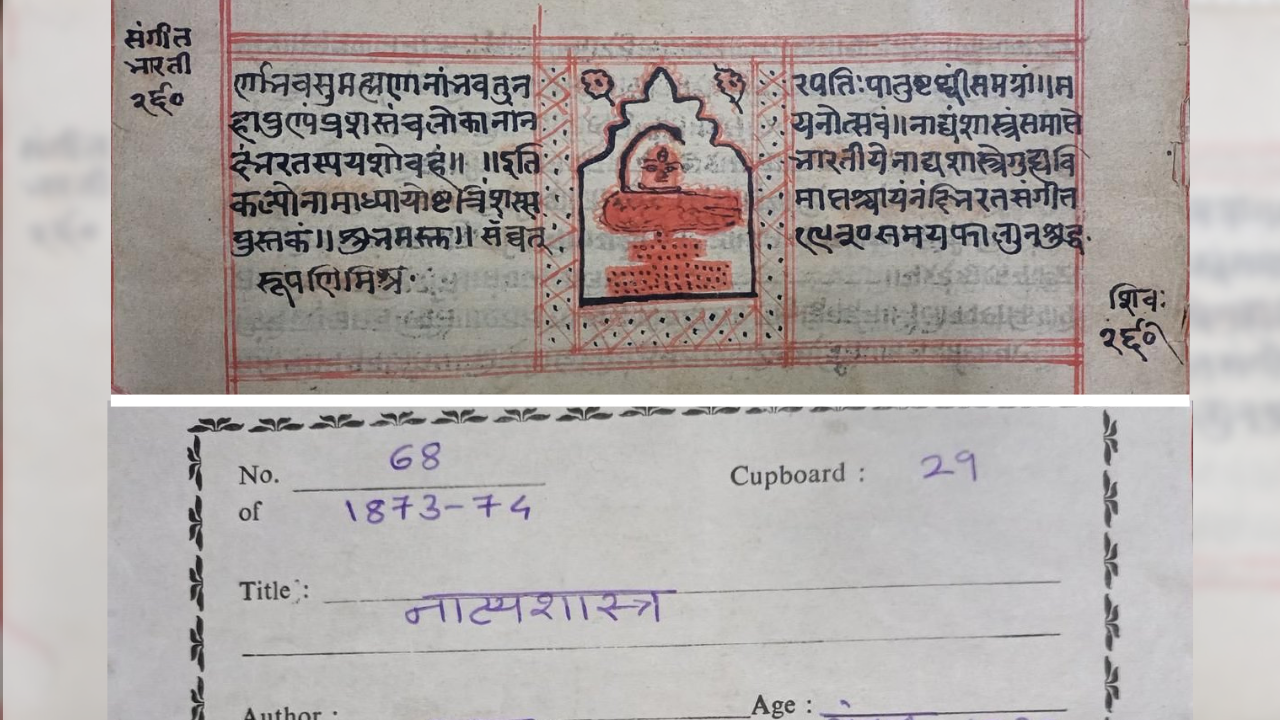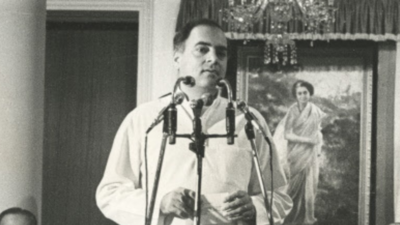India's literary milestone On the occasion of World Heritage day, manuscripts of Bhagavad Gita and Bharat Muni's Natyashastra have been inscribed in Unesco’s Memory of the World Register. This is a global honour as India now lists 14 inscriptions on this internationally acknowleged list. (Pic credit: X/Gajendra Singh Shekhawat) The IAS Tamil Medical Manuscript Collection (1997) It is the first Indian text to be inducted in the Unesco World Register in 1997.
These are Tamil Medical Manuscripts preserved at the Institute of Asian Studies has collected 564 copies of these texts, all written in South India, mostly in Tamil, on palm leaves. The texts reflect both the Siddha and Ayurvedic medical systems that discuss the methods of obtaining medicines from herbs, herbal roots, leaves, flowers and the specific processes are explained in detail. (Pic credit: Institute of Asian Studies) Saiva manuscripts (2005) A collection of texts based on the devotional philosophy of Shaivism are the Saiva texts (the Agama-s, commentaries, manuals, etc.

), devotional hymns, sthalapurana-s (legends of many Saiva holy places), texts on Siddha medicines in Tamil, etc. Its surviving texts, the majority of them unpublished, range from the 6th century CE to the colonial period. The collection is presently housed in the French institutions of research in Pondicherry.
( Pic credit: Institut Francais de Pondichery ) Rigveda (2007) Rigveda is the first literary documents in the history of humankind, oldest among the four Vedas. It is not a single book but a compilation of books (Samhita). Only one school (Shakha) of the Rigveda is available today and it is the Shaakala.
The Rigveda Samhita contains about 10552 Mantras, classified into ten books called Mandalas. Each Mandala is divided into sections called Anuvakas. Each Anuvaka consists of a number of hymns called Suktas and each Sukta is made up of a number of verses called riks.
(Pic credit: Bhandarkar Oriental Research Institute, Pune) Tarikh-e-Khandan-e-Timuriyah (2011) The Tarikh-e-Khandan-e- Timuriyah recounts the history of the Timurids i.e. of Timur and his successors in Iran and India.
This richly illustrated manuscript was written and created twenty two years into the reign of the great Mughal emperor and a descendant of Timur, Jalaluddin Mohammad Akbar, in 1577-78 AD. The paintings of the Tarikh-e Khandan-e Timuriyah highlight their contributions to the development of astrology, astronomy, medicine, fine arts, architecture, paintings and literature. (Pic credit: Khuda Bakhsh Oriental Public Library) Laghukalachakratantrarajatika Vimalaprabha (2011) Laghukalacakratantrarajatika (Vimalaprabha), an 11th-century Tibetan Buddhist text is a commentary to the Kalacakra Tantra.
The Vimalaprabhā commentary forms the basis of the Kalacakra, a practice in Tibetan Buddhism. These manuscripts are significant for their historical, intellectual, and aesthetic value. While the primary focus is Tantra, the text also offers detailed discussions on astrology and astronomy and core Indian philosophical concepts in depth.
Its importance is especially notable given the turbulent medieval period in India, during which many Buddhist manuscripts were lost. (Pic credit: Asiatic Society, Kolkata) Shantinatha Charitra (2013) It is a Sanskrit text, written in the Devanagari script, narrates the life and times of Shantinatha, the sixteenth Jain Tirthankara. Composed in 1396 CE (1453 Vikram Samvat), the manuscript is a remarkable example of late 14th-century Jain literature.
It features ten illustrated scenes from Shantinatha’s life, rendered in the distinctive style of Jain paintings from Gujarat. It is an example of the finest expression in the art of miniature paintings in manuscripts. The ink used in the manuscript is gum lampblack and white paint made from mineral silver.
(Pic credit: Chhatrapati Shivaji Maharaj Vastu Sangrahalaya) Gilgit manuscript (2017) The birch bark and clay-coated Gilgit manuscripts are the oldest known surviving manuscripts in India. They comprise both canonical and non-canonical Buddhist texts that offer valuable insights into the evolution of religious and philosophical literature across Sanskrit, Chinese, Korean, Japanese, Mongolian, Manchu, and Tibetan traditions. These manuscripts are crucial for the study of the history and development of Buddhist thought and writing.
Paleographic analysis dates them to the 5th–6th century AD. They are written in a Buddhist hybrid Sanskrit, using Gupta Brahmi and Post-Gupta Brahmi scripts. The manuscripts were discovered in three separate finds in the Gilgit region of Kashmir.
(Pic credit: National Archives of India, New Delhi) Maitreyayvarakarana (2017) Maitreyavyakaraṇa is a brief palm-leaf manuscript written in a blend of Kutila and Ranjana scripts. Dating to the Pala period, during the reign of Gopaladeva, it is currently preserved by the Asiatic Society in Kolkata. The text prophesies the future arrival of Maitreya, who is believed to descend to earth as an enlightened Buddha and teach the pure dharma.
It was composed during a transitional period in Buddhist literature, marking the shift from the Sthaviravada to the Mahayana tradition. (Pic credit: Ranjit Sen) Abhinavagupta (2023) This collection consists of 248 manuscripts by Abhinavagupta (940–1015 CE), a remarkable Indian philosopher and polymath from 10th-century Srinagar, Kashmir. Abhinavagupta made lasting contributions to philosophy, aesthetics, literary theory, performing arts, music, tantra, yoga, and devotion.
The manuscripts span 41 texts (granthas) and reflect a vibrant knowledge culture whose influence once extended across South Asia, Central Asia, and Northeast Asia. (Pic credit: Internet Archive) Ramcharitmanas (2024) Ramcharitmanas composed by Goswami Tulsidasa in Awadhi language in the 16th-century text, which is considered one of the greatest works of Hindu literature. The core of the work is considered to be a poetic retelling of the events of the Sanskrit epic Ramayana.
The text is not only famous in India, but also in other Southeast Asian countries, such as Thailand, Cambodia, Indonesia and Sri Lanka. (Pic credit: Unesco) Panchatantra (2024) The Panchatantra is an ancient collection of animal fables in Sanskrit verse and prose. The existing text dates to around 300 CE, though the fables themselves are believed to be much older.
(Pic credit: Unesco) Sahrdayaloka-Locana (2024) The manuscript contains two foundational works of Indian Poetics: the Sahṛdayaloka and the Locana. The Sahṛdayaloka, a groundbreaking text by Rajanaka Anandavardhana—who lived in Kashmir during the late 9th century CE. He introduced the concept of dhvani (suggested or evoked meaning) as the core essence of poetry, marking a turning point in Indian literary theory.
The Locana, written in the 10th century CE by Abhinavagupta, a renowned philosopher, art critic, and theatre theorist, serves as a detailed commentary on Anandavardhana’s work. (Pic credit: Unesco) Shrimad Bhagavad Gita (2025) The Bhagavad Gita is a sacred conversation between Lord Krishna and Arjuna set on the battlefield of Kurukshetra, forming a part of the epic Mahabharata. Comprising 700 verses across 18 chapters, it explores deep philosophical themes, advocating for selfless action, devotion, and inner discipline.
Drawing from Vedic, Buddhist, Jain, and Carvaka traditions, the Gita stands as a pillar of India’s spiritual and intellectual legacy. It has been studied, interpreted, and translated worldwide for centuries. (Pic credit: IANS) Bharat Muni’s Natyashastra (2025) The Natyashastra, attributed to the sage Bharata Muni, is the foundational text on Indian performing arts—including theatre, dance, and music.
Its influence spans centuries, shaping classical artistic traditions and continuing to serve as an essential guide for performers and scholars today. (Pic credit: X/Gajendra Singh Shekhawat) 10 Popular types of chilies from around the world Baby names inspired by female leaders and great personalities of India Best clicks of Esha Kansara 10 animals whose names begin with the letter R 8 most notable books with strong female leads and characters 10 animals that can survive in extreme conditions 10 electronics that consume the most energy in people's homes Zodiac signs who love with all their heart All about the Caracal: A fierce and vicious member of the wild cat family Biggest Bollywood scandals that made headlines 5 things your eyes can tell about your liver health From a fishing excursion to Pranayam sessions in Dal Lake; breast cancer fighter Hina Khan shares her healing moments from Kashmir 7 oldest castles in the world 5 best skincare tips for teenagers 6 amazing benefits of papaya leaf juice Evaarah to Raha: Unique celebrity baby names and their meanings Top 5 iconic Akshay Kumar movies to watch on OTT Polka dot sarees inspired by Bollywood celebs that are perfect for this summer run.
Food

Bhagavad Gita & Natyashastra added to Unesco's Memory of the World Register. Know about the 14 Indian treasures honoured by Unesco

On the occasion of World Heritage day, manuscripts of Bhagavad Gita and Bharat Muni's Natyashastra have been inscribed in Unesco’s Memory of the World Register. This is a global honour as India now lists 14 inscriptions on this internationally acknowleged list.














